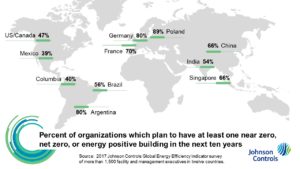The buildings industry has long been looking beyond component-level energy-saving measures to achieve the next level of efficiency in buildings. In 2015, the Alliance to Save Energy launched the Systems Efficiency Initiative (SEI) – a multi-year collaboration among industry leaders, utilities, efficiency advocates, and national and state-level government agencies – to focus collaboratively on advancing energy efficiency in building systems. The goal of the group was to identify and promote opportunities for capturing the significant untapped energy savings potential of a systems-level approach to building efficiency, taking into account interactions within and among HVAC, lighting, and other building systems; interactions among multiple buildings; and the integration of buildings with the grid. The initiative’s two reports provide recommendations for various audiences (e.g., US Congress, federal and state agencies, utilities, manufacturers, architects) designed to move the market to ward systems efficiency.
ward systems efficiency.
Recent industry studies confirm that the systems efficiency and integrated design approaches recommended in the SEI reports are recognized as critical for achieving high performance and zero net energy buildings – and that the industry is responding. In its 11th edition, the Johnson Controls 2017 Energy Efficiency Indicator surveyed more than 1,500 energy and facility management executives from 12 countries and found that 58 percent are expecting to increase energy efficiency and renewable energy investments in the next year. Investments in HVAC equipment and controls were again the most popular investments (75 percent) with building systems integration increasing to 46 percent of respondents. Onsite renewable energy is the most popular investment (57 percent) planned for next year along with energy storage (48 percent). These trends suggest a more systems-based approach to high performance buildings, including zero net energy buildings. In fact, 54 percent of global organizations say they are planning to achieve near zero, net zero or energy positive status for at least one building within the next ten years.
A recent study of 90 buildings reported in ASHRAE High Performing Buildings Magazine and ASHRAE Technology Award winning buildings determined that 74 (or 82 percent) of these buildings are using multiple HVAC systems in a hybrid design; on average, four HVAC technologies are applied per project. In fact, the study found 68 unique HVAC technology/system combinations or configurations used in projects. An analysis of Energy Use Intensity across the projects showed that no system clearly outperformed any other system. Clearly, in order to make optimal design decisions, a simulation-based approach is needed where the same building geometry/architecture, lighting, plug loads, schedules, weather conditions, etc., can be analyzed with different HVAC system types or configurations.
Integrated building controls are an increasingly important factor in achieving high performance buildings and, particularly, zero net energy buildings. Many zero net energy buildings incorporate a combination of passive and active elements related to HVAC, lighting and plug loads which require thoughtful integration of both automated and occupant-based controls. A common application is disabling mechanical HVAC systems in response to open windows or natural ventilation operating models.
In a recent study on zero net energy building controls conducted by the New Buildings Institute, 67 percent of the 21 buildings surveyed employed a fully integrated controls architecture that addressed all controlled end-uses in a centralized and automated fashion. Additionally, 74 percent of the buildings relied on building occupants for some part of their control operations. Most buildings incorporated plug-load controls such as smart power strips, outlet level controls or centralized power management and all buildings incorporated energy-use dashboards and occupant feedback.
Thomas Kaufman, Director of Corporate Real Estate for United Therapeutics, was quoted in a recent article about managing one of the largest zero net energy projects in the United States, “Once controls technology was not even on our radar. Now we know we live or die by controls.” It is increasingly clear that early involvement of controls vendors in an integrated design process, participation in systems-level commissioning activities and support for on-going system optimization are required to capture the benefits of systems efficiency approaches for designing and operating high performance and zero net energy buildings.
By Clay Nesler, VP of Global Sustainability and Industry Initiatives, Johnson Controls
Laura Van Wie McGrory, VP of Strategic Initiatives, Alliance to Save Energy
